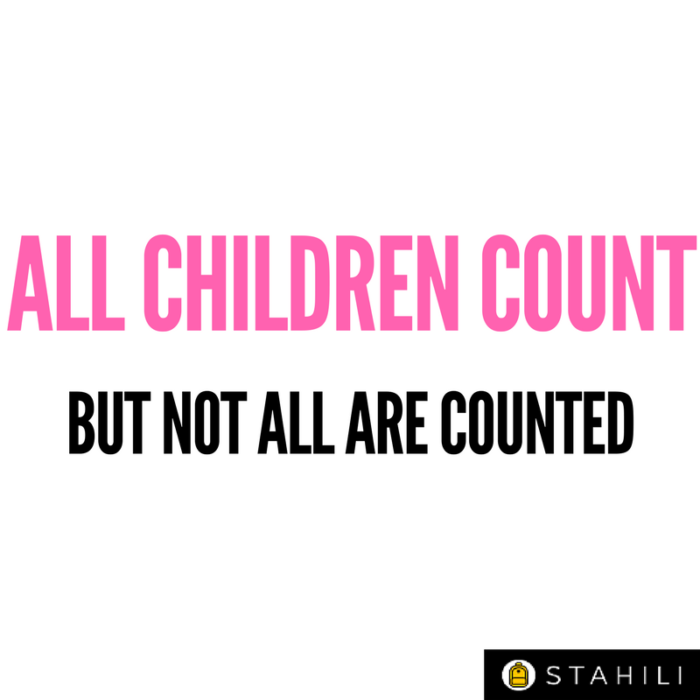All Children in Kenya Count but not all Children in Kenya are Counted

Achieving the targets of the Sustainable Development Goals (SDGs) agenda in Kenya by 2030 is important in order to ensure that children have a life that they deserve. But in order to meet the SDG targets, all vulnerable children in Kenya need to be included.
In official surveys, children living outside of households are often not counted. In 2016, Stahili joined a global call for an improved global monitoring framework for assessing the needs of the most vulnerable and hard-to-reach populations. For instance, children living in institutional care such as as orphanages or children’s homes, much like children living in street situations, are often not recorded in official statistics and so fall off the map when it comes to policy-making. The needs of these ‘invisible’ children may not taken into account by governments when developing policies and mobilising resources to uplift the most vulnerable.
Research suggests that up to 250 million people globally may not be counted due to household-based survey methodologies. Children outside of households are therefore not counted. The omission of such large numbers of people, including children, has serious consequences when it comes to achieving the SDG targets. Uncounted populations remain on the margins of society and without a voice, denied basic rights and services.
How many children are in orphanages?
We do not know the exact number of children living in orphanages and other forms of residential care where they are denied their right to a family life. Worldwide, it is thought that at least 8 million children are living outside families in institutional settings, although this figure — which dates back to research in the 1980s — is likely to be a gross under-estimate.
In Kenya, it is suggested that there are approximately 2.5 million orphans and vulnerable children, most of whom live within family and community environments. While the government recently reported that 45,000 children are housed in more than 800 registered charitable children’s institutions (CCIs) (i.e. orphanages or children’s homes), the actual number is unknown. It is likely to be considerably higher since many orphanages are unregistered and therefore operate outside government regulations. In one sub-county, Stahili continues to witness first-hand a number of unregistered residential care institutions, suggesting that the real number across the country may be several times higher than officially stated in some locations. But the true statistics are unknown.
Working towards counting children in Kenya
The government of Kenya has recently committed to a process of bringing children home (i.e. deinstitutionalisation) which is intended to close CCIs and promote family-based care throughout the country. Counting all children so that they can be included in a plan of action is critical. Stahili is committed to working with local and national government in Kenya on broader and more inclusive forms of data gathering beyond household data collection.
These steps will be important to ensure that children living in residential care institutions in Kenya are counted and not left behind. Until this happens, not all children will be counted.